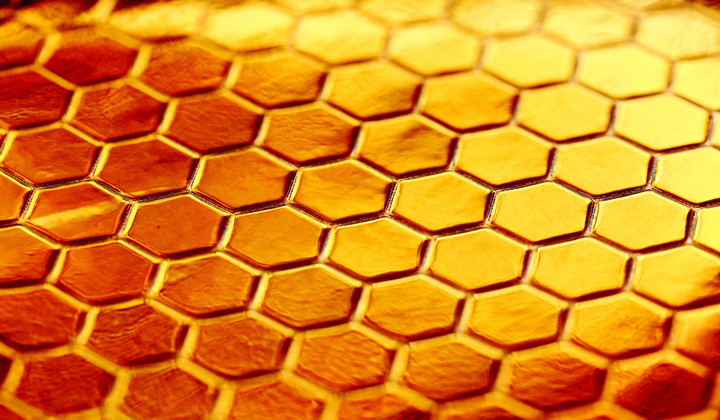


Sugars make up about 95% of honey, explaining how the substance became synonymous with sweetness and a food staple of bee colonies, which repeatedly digest and regurgitate flower nectar to produce it.
But people have also historically used honey as an ointment, hinting at anti-inflammatory properties that researchers are now investigating. Some of that research suggests honey can act on a protein called NLRP3, which triggers beneficial inflammation during immune responses but has also been implicated in diabetes, Alzheimer's and other diseases.
A multidisciplinary team of Nebraska researchers, led by Jiujiu Yu, went searching for overlooked components of honey that could help explain its anti-inflammatory activity. When they did, they found so-called extracellular vesicles: tiny membrane-protected particles that often carry proteins, ribonucleic acids and other biomolecules from one cell to another and have been identified in many foods.
The honey-housed vesicles contained 142 proteins from plants and 82 from honey bees, consistent with a nanoparticle produced by a flower, then consumed and regurgitated by the bees.
To test whether the vesicles themselves help combat inflammation, the team placed them alongside white blood cells that produce the inflammation-triggering NLRP3 protein, then kickstarted inflammatory processes. The vesicles substantially reduced the production and secretion of multiple inflammation-causing proteins, along with the inflammation-related death of certain cells. And when the team injected mice with the vesicles, it found that the nanoparticles partly alleviated both inflammation and drug-induced liver injury.
The researchers identified microribonucleic acids, or microRNAs, as the main anti-inflammatory cargo within the vesicles, even pinpointing a particular microRNA most responsible for the effects.
Further studies would need to establish whether and how vesicles consumed via honey actually curb inflammation in people, the researchers said. Studying how they interact with bacteria in the human gut could be a worthwhile starting point.
Source: https://phys.org/news/2021-04-team-inflammation-fighting-nanoparticles-honey.html

Scheduled Server Maintenance and System Downtime Notice Dec 12, 2025

Celebrating CM Editorial Board Members Recognized in the Wor... Oct 10, 2025

Food Science and Engineering Now Indexed in CAS Database Aug 20, 2025

Contemporary Mathematics Achieves Significant Milestone in 2... Jun 19, 2025

Three Journals under Universal Wiser Publisher are Newly Ind... Apr 21, 2025